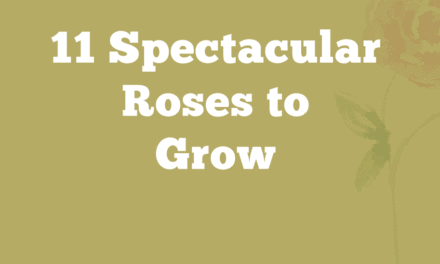There are few flowers as beautiful and aromatic as lilacs. Lilacs, or genus Syringa, have a strong scent that fills a garden; a scent that leaves no doubt as to the source.
Lilacs bloom for only a brief couple of weeks in the spring. To prolong their presence in your yard, grow a variety of lilacs including early, mid, and late bloomers. With the right plants and a little luck, you may be able to see Lilacs in bloom in your yard for up to six weeks. Weather has a lot to do with how long your blooms last. Once the buds begin to open, pray for a cool dry spell. Once the blooms are over, you still have a nice shade bush, but you’ll have to wait for up to fifty more weeks to see the show again.
Lilacs: A Historical Overview
Lilacs in the United States date back to the mid 1750’s. They were grown in America’s first botanical gardens and were popular in New England. Both George Washington and Thomas Jefferson grew them in their gardens. Bushes can live for hundreds of years, so a bush planted at that time may still be around. Lilacs originated from Europe and Asia with a majority of native species coming from Asia. In Europe, species lilacs came from the Balkans, France, and Turkey.
List of Eight Most Popular Lilac Varieties
- Syringa Laciniata or Cutleaf Lilac
- Syringa Meyeri
- S. Patula or Manchurian Lilac
- S. Reticulata or Japanese Tree Lilac
- S. X persica or Persian Lilac
- S. X Prestoniae
- S. X Hyacinthiflora
- S. Vulgar
Description of Lilac Varieties
There are over 1, 000 varieties of Lilacs. They come in several colors, with the most popular being the color lilac and purple. White and pink are also popular. They also vary widely in size from the smaller 8-foot varieties to types that can grow up to 30 feet. So many lilacs, so little time; we will limit our discussion to varieties commonly found in the Northern garden.
Syringa Laciniata or Cutleaf Lilac
Syringa Laciniata or Cutleaf Lilac is starting to be found more often in the trade. This 6’x 8’ plant was once thought to be a sport of S. persica. The finely cut leaves make it an interesting inclusion to any lilac collection and like Persian lilac it is at it’s best in Zone 7, although it is certainly Zone 4 hardy.
Syringa Meyeri
Syringa Meyeri, 4’ to 8’ high and half again in spread ‘Palabin’ is the cultivar of choice. Violet-purple flowers cover the plant in May, which maintains a small, dense form (for a lilac). Not as fragrant as the French hybrids, but very tidy. Zone 3 to Zone 7.
S. patula or Manchurian Lilac
S. Patula or Manchurian Lilac is a more upright cousin of Meyeri reaching 9’ to 10’ at maturity. The usual cultivar is ‘Miss Kim’, with an icy blue, fragrant flower from purple buds in May. It lists as 3’ by 3’; I’ve seen it at 5 and a half feet, and Dirr says the parent plant is 8’. I believe him. Zone 3 to Zone 8.
S. Reticulata or Japanese Tree Lilac
S. Reticulata or Japanese Tree Lilac is a different beast entirely. 20’ to 30’ with a 20’ spread, this is truly a tree, and yet definetely a lilac. ‘Ivory Silk’ is the best cultivar out there, being the most prolific bloomer and a little more compact (closer to 20’). Foot long panicles of creamy blooms arrive in June with a scent that reminds me of privet. Zone 3 to Zone 7.
S. X Persica or Persian lilac
S. X Persica or Persian lilac is an oldie introduced to the trade in 1614! Reaching to 5’ and half again as wide, with fragrant pale lilac flowers in May. This one has been in the trade so long and nothing like it is found in the wilds of Persia or anywhere else, so it may be a sterile hybrid…(and that means they’ve been hybridizing lilacs for around four hundred years!)
S. X Prestoniae
S. X Prestoniae is a 6’ to 10’ late blooming hybrid that is impervious to many of the troubles other lilacs get into. Look for ‘Miss Canada’ (a bright pink) and ‘Donald Wyman’ (pink to almost red). These bloom in early June, so Preston Lilacs extend lilac season half a month. Mildew resistant and impervious to bacterial blight. Zone 2 to Zone 7.
S. X Hyacinthiflora
S. Hyacinthiflora is another great hybrid that deserves more attention. This 10’ to 12’ rock solid performer is ready to do its thing on the first of May in Connecticut. ‘Pocahontas’ is the fleur du jour with a prolific purple bloom with nearly the scent of vulgaris. The dark shiny leaf sheds water, and therefore mildew, making this a three-way winner. Zone 3 to 7.
S. Vulgar
S. Vulgar is Grandma’s lilac, the one that inspired so many candle fragrances and sachets. With easily 1,000 different cultivars, the plain old species still remains a tried and true standby. It has that fine lilac color and the best scent of any lilac. Most French Hybrids (virtually every named cultivar is considered a French Hybrid) get to be 12’ to 15’ by 8’ to 12’ and bloom in mid-May. These are the lilacs that gardeners dream about those last winter nights before the thaw. The variations in flower colors are every shade of purple and blue with the occasional white or red thrown in.
Description of Eight Lilac Varieties Perfect for Home Gardens:
- ‘Charles Joly’
This is a wine red double - ‘’Beauty of Moscow’
The clearest white; double - ‘Katherine Havermeyer’
The best pink hybrid; double - ‘Monge’
A single deep purple - ‘Pres. Grevy’
A double blue - ‘Primrose’
A single “yellow” - ‘Royal Purple’
A double that fits the billing - ‘Sensation’
White edging in every purple petal; single


